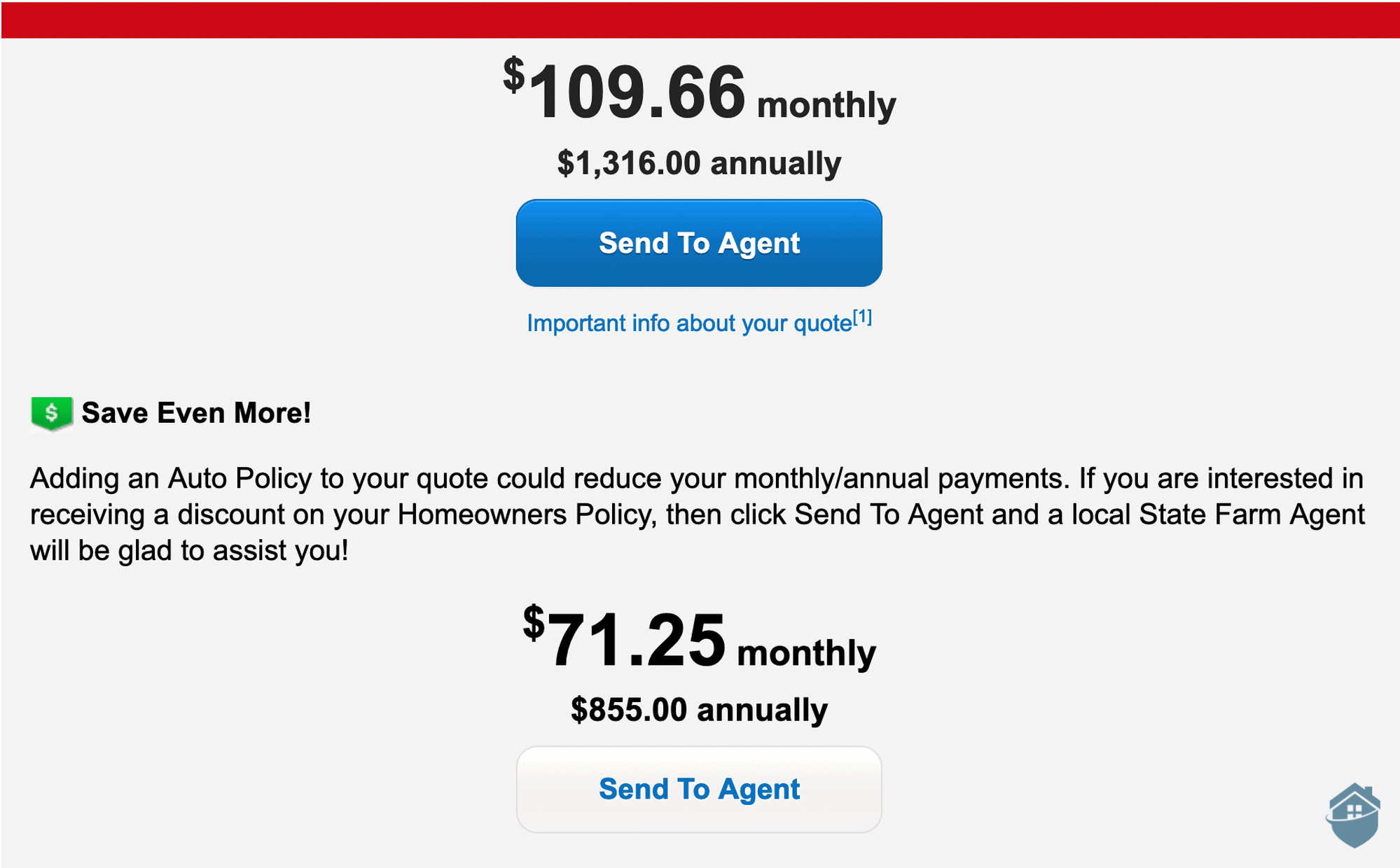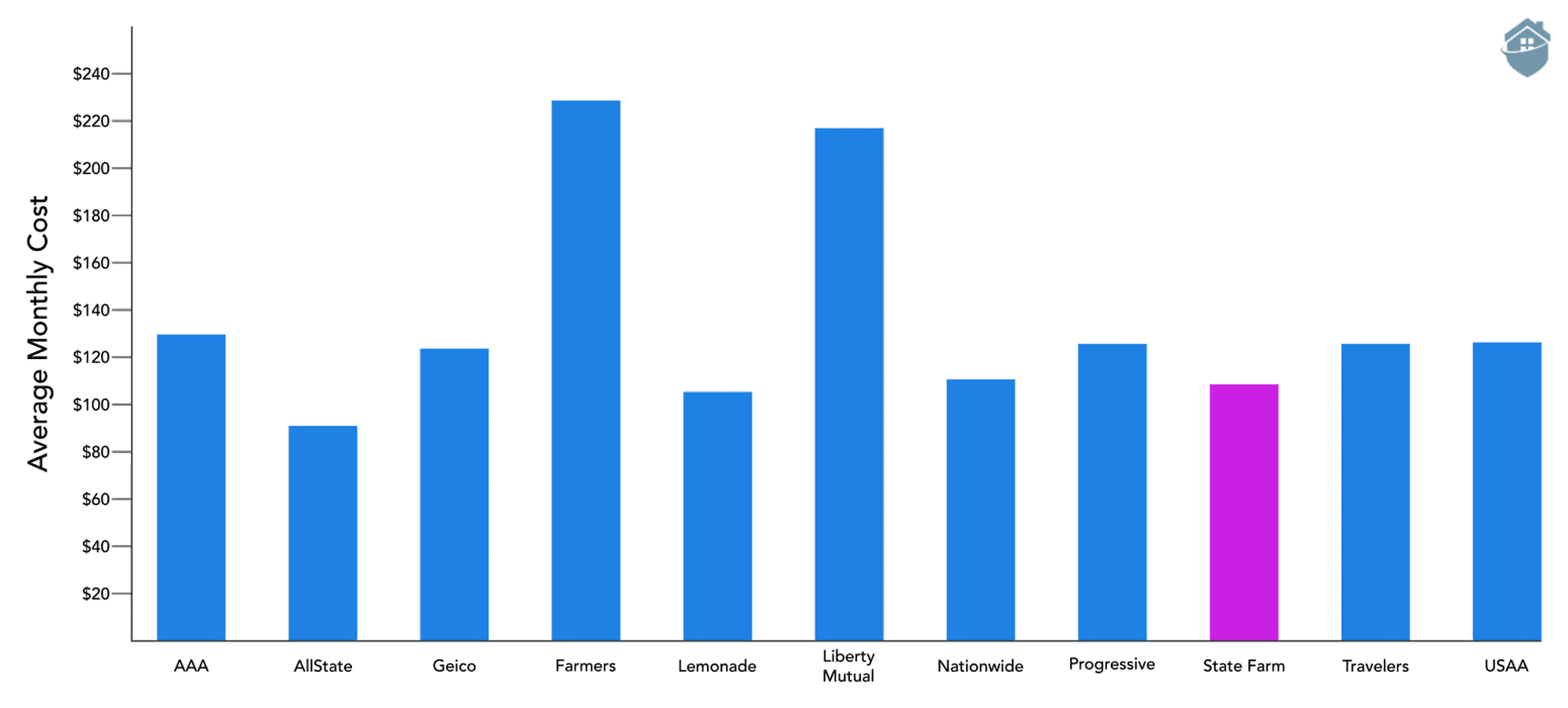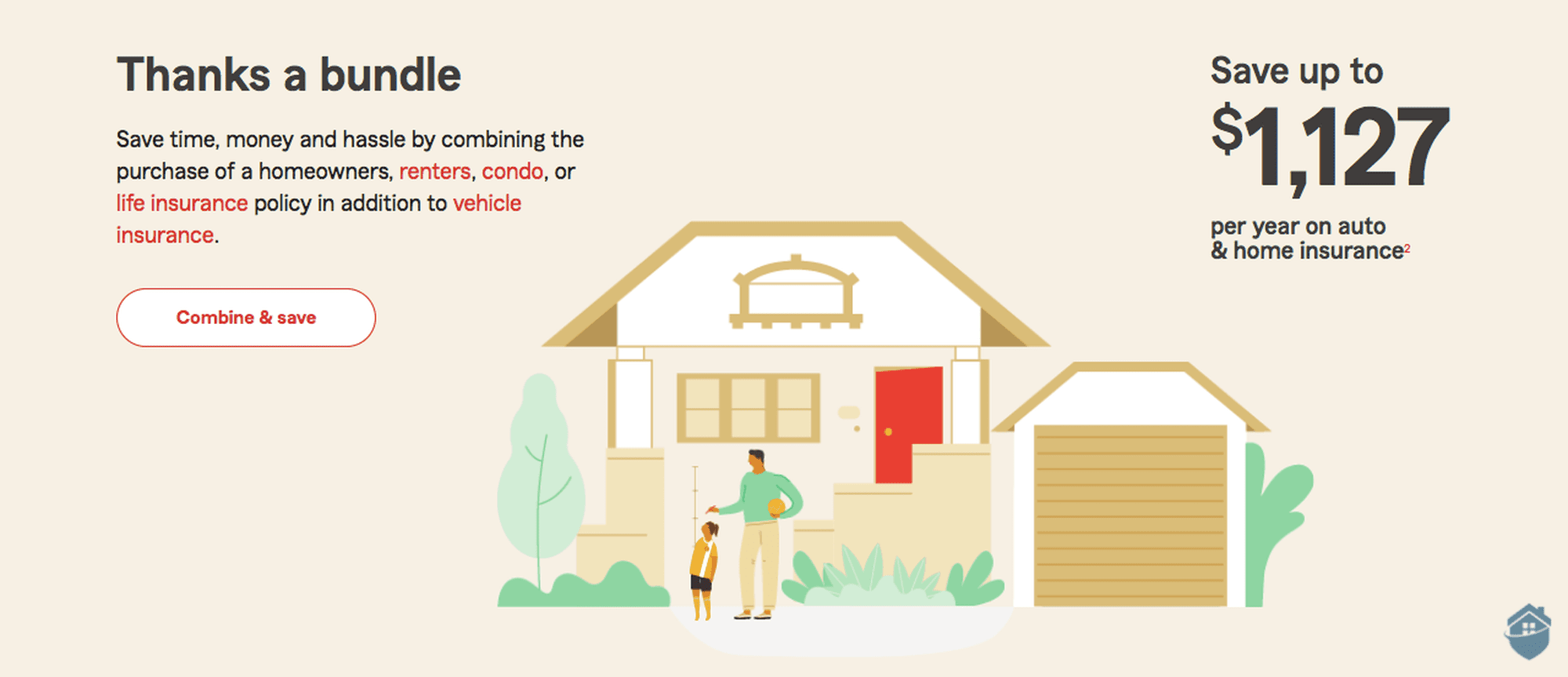Does State Farm Renters Insurance Continue if You Move
How safe is your home? Do you feel pretty secure?
Maybe you've invested in an alarm system or a network of security cameras? That's great, but have you considered your homeowners insurance? Why am I asking? Because home insurance is essentially home security. A comprehensive policy will help protect your biggest investment should disaster occur.
With that in mind, let's break down State Farm's services and costs and get a better feel for how this provider is going to protect you in the event of an emergency. First though, let's take a quick look at what they offer.
Key Coverages
- Dwelling
- Other structures
- Personal property (replacement cost value)
- Personal liability
- Medical payments
- Loss of use
- Valuables
- Business property
- Building ordinance
- Water backup
- Earthquake
- Identity restoration
- Special computer coverage
A new "Jake" for a new century of business. State Farm turned 100 in 2021.
State Farm Home Insurance Coverage Up Close
You don't find many homeowners policies for $100 and change per month that include replacement cost value coverage for your things and your home. While State Farm's free valuables coverage is a little old-fashioned (it covers jewelry and furs), their business property coverage is going to be a sweet perk for small business owners.
And — spoiler alert — that $100 monthly premium doesn't include the special savings you get for bundling your State Farm auto and homeowners policies. More on that below. For now, here's a breakdown of what's standard and what's à la carte with your State Farm home insurance policy.
Did You Know: Most insurance companies offer incentives for bundling multiple policies, usually 4 to 10 percent off your premiums. Beyond the savings, bundling means less paperwork for you, and it also means, if you ever do have claims to file, you'll be dealing with one company, not two.
State Farm Home Insurance Coverage
| Basic | Optional |
|---|---|
| Dwelling (including other structures) | Water backup |
| Personal property (replacement cost) | Earthquake |
| Personal liability | Identity restoration |
| Medical payments to others | Special computer coverage |
| Loss of use | |
| Valuables | |
| Business property | |
| Building ordinance |
Basic coverages
- Dwelling (including other structures): Your property coverage will determine how much you'll get to rebuild your home and anything attached to it in the event of a serious accident, so it's very important to get right. If you're not sure how to calculate your dwelling coverage, talk to an agent. You can also use State Farm's 360Value® Tool.
- Personal property: State Farm has the best type of belongings protection on the market, replacement cost value (RCV) coverage. This means they'll replace your things at their current market value, not what they're worth on eBay. You don't have to pay extra for State Farm's RCV coverage either, which isn't always the case.
- Personal liability: Here State Farm goes a little low for my taste, with $100,000 to protect me against litigious visitors and any accidents on my property. The good news is that raising my coverage to the standard $300,000 set me back only two bucks a month.
- Medical payments to others: State Farm offers the standard $1,000 for medical expenses to guests injured on your property, which should be fine for most of us.
- Loss of use: State Farm reimburses you for the difference between your normal living costs (usually food, mortgage, and gas) and any additional costs you end up paying while your home is uninhabitable. The cap on your reimbursement is 20 percent of your dwelling coverage.
- Valuables: Technically, this is "jewelry and furs" coverage. A little quaint, sure, but it is included for free. State Farm's default valuables coverage is $1,500, but you can always raise it to $5,000 if you own a lot of jewels.
- Business property: State Farm's business property coverage is kind of neat, especially if you're an entrepreneur and you have to pay for your work laptop out of your own pocket. The maximum coverage for on-premises equipment is $5,000.
- Building ordinance: If you rebuild, you may have to build to code, and that could mean putting in a sprinkler, upgrading your HVAC system, or even changing structural components like your foundation. Yikes! Your State Farm policy will help you pass inspection with an extra 10 percent of your dwelling coverage (you can raise it to 50 percent), a very handy amount to have in your back pocket.
Homeowner's Tip: One important perk we discovered when we reviewed State Farm's homeowners plans was affordable extra replacement cost coverage to offset inflation or elevated future building costs.
Extra coverages
- Water backup: Who would have thought a clogged sewer line could cost thousands of dollars to unblock, and that it's your responsibility if it's on your property? If you want to avoid the headaches — and the liability — State Farm's water backup coverage (up to $5,000) will run you about $2 per month.
- Earthquake: Earthquake insurance isn't cheap. Protecting your home for just 6 percent of your dwelling coverage could run you over $20 monthly with State Farm. But if you live in an area at risk for earthquakes (not just California, by the way), this might be protection that you want to add to your homeowner's quiver.
- Identity restoration: The identity theft services most home insurance providers offer are limited to restoration, and frankly, the reimbursements aren't usually that much. The exceptions are Allstate and Progressive. With an Allstate homeowners package you can add Allstate's own premium identity theft monitoring service to your policy. Progressive home insurance plans offer a comparable situation with IDnotify. Both offer up to $1 million in restoration, whereas State Farm's $25-per-year protection caps your reimbursement at $15,000.
- Special computer coverage: You may have heard of equipment breakdown coverage, which covers household appliances for accidents that fall outside the scope of a typical warranty. State Farm's special computer coverage is like that, but for your laptops and desktops.
FYI: Portable electronics insurance, which is becoming more and more popular these days, covers things like dropping your gadgets or spilling coffee on them, but not theft. Theft should be covered by your homeowners policy, believe it or not, even if someone filches your computer while you're at Starbucks.
State Farm Home Insurance Rates
The average homeowners insurance rate in the U.S. is $104 per month. But guess what? That figure doesn't tell us much. You can get a very detailed explanation of why in our 2022 Homeowners Insurance Guide. But the gist is that home insurance rates are very personal. They depend on you, your property, your state, and even your neighborhood.
When we tested out State Farm's online quote generator, the home we "insured" was an older-than-average property in Charlotte, North Carolina, with a market value of around $250,000.
Our base quote was $109.66 per month. By "base," I mean without RCV property coverage, water backup protection, earthquake insurance, or any of the other goodies State Farm lets you add on to their standard HO-3 policy. This is what it looks like.

My State Farm quote was excellent value for money, even before bundling.
Now, here's how my State Farm quote compares to the U.S. median and to the other top 10 home insurance providers in the nation this year.
State Farm Premiums vs. the Median U.S. Premium
| State Farm monthly premium | State Farm yearly premium | Average monthly premium in the U.S. | Average yearly premium in the U.S. |
|---|---|---|---|
| $109-$138 | $1,332-$1,656 | $104 | $1,249 |
State Farm Premiums vs. the Competition
As you can see, State Farm home insurance policies are among the lowest on the market this year. The only homeowner provider we found that can match State Farm's value for money is Lemonade. For a coverage-by-coverage breakdown, check out our Lemonade pricing and protections guide.

Average Monthly Cost – State Farm
Getting the Most Value for Money From Your State Farm Policy
While State Farm's basic HO-3 policy is generous, it doesn't cover everything. (No basic plans we've found do.) But you can beef up your State Farm home insurance plan easily, and it's surprisingly affordable.
When I added the works to my State Farm test policy, my monthly premium was still only $138. The works, in this case, were $65,000 in additional replacement cost property coverage (to protect my wallet against any surprise building costs down the line), water backup insurance, special computer coverage, and earthquake coverage.
Now, again, this rate doesn't reflect what I'd pay if I bundled my auto insurance with State Farm. That rate (coming up in just a sec) was absolutely amazing.
Homeowner's Tip: If you want to get an idea of average home insurance costs, your state's average will be a more useful metric than the national median. To look up your state's rate, check out Table 4 of the latest NAIC homeowners insurance report.1
Other Types of Insurance
State Farm might not be the one-stop policy shop we found when we reviewed Progressive insurance, but they do cover a huge amount of terrain, including six products for small businesses and plenty of health and life options, including disability.
But State Farm's most popular sister coverage is auto insurance. There's a reason. It's cheap, stacked with smart perks, and available just about everywhere. When you bundle your auto and homeowners policies, the savings can be significant.

State Farm's Drive Safe & Save program lowers your premium if you drive safely.
For starters, State Farm has solved one problem plenty of families with teenage drivers have faced for years: high rates for their driving-age kids. State Farm's SteerClear® program, which works along the same lines as their Drive Safe & Save™ program, tracks younger drivers (25 and under) via their app when they're on the road. If they're not driving like maniacs, their rates may go down.
For the rest of the family, State Farm's Drive Safe & Save app tracks everything from cornering and braking to "distracted driving" moments. Driving responsibly could knock 30 percent off your policy.
This is all great news for safe drivers. What would be even better? When we reviewed Lemonade's homeowners policies, we discovered incentives to drive less. Popping to the supermarket for a gallon of milk might save a little time, but, personally, I'm down with saving a few bucks by walking.
Did You Know: In 2019, the National Highway Traffic Safety Association logged 3,142 road fatalities caused by distracted driving.2
Renters Insurance
Average insurance rates for renters are about $175 per year for $33,000 to $37,000 of coverage. That's 15 bucks per month, or roughly three Iced Sugar Cookie Almond Milk Lattes.
Since a large part of what you're protecting with renters insurance is your personal property, you'll definitely want to explore State Farm's coverage limits. For instance, if you have a lot of valuables or collectibles, or what would be considered "business property" (see above), you may need to pay extra for full coverage.
One thing you can count on is quality service. Along with another of our favorite homeowners providers, Lemonade, State Farm scored at the top of J.D. Power's charts for renters' customer satisfaction.3
Trupanion Pet Insurance
Unusually, State Farm has separate plans for dogs and cats. What's common to both policies is Trupanion's inclusive coverage. They won't turn your breed down like some insurance providers we've looked at. There are no settlement limits either, and you have access to medical experts 24/7.
Homeowner's Tip: Whether you rent or own, you're going to want to inventory your possessions, preferably before you settle on a coverage limit. Taking inventory is old school. You don't need a special app to do it, just a pad and pencil. And you don't need to count everything. Laptops. Check. Beats headphones. Check. Your kids' last five Happy Meal boxes you saved just in case. You can leave those off the list.
Bundling Policies With State Farm

Bundling auto and home insurance saved us about 35 percent off our State Farm quote.
You can bundle pretty much any State Farm insurance product and save (see multiple line discounts below), but the big fish on State Farm's multiple line discount menu is its auto and home insurance bundle.
I've kind of built up the suspense on this discount, but actually, if you look closely at the quote State Farm gave me a few paragraphs back, under the basic HO-3 rate was a special price for bundling.
That price was $855 per year, or $71.25 monthly. To put that number into perspective, that's over $30 cheaper than the average homeowners rate in the U.S., and about $20 less than North Carolina's lower-than-average home insurance rates.
So, in case there was any doubt, yes, you can save big by bundling with State Farm.
FYI: State Farm isn't the only bundle-friendly homeowners provider on the market. For more A++ bundling deals, check out our guide to the top home insurance bundles of 2022.
State Farm's Special Discounts
- Multiple lines: State Farm sells over 25 different insurance products. When you subscribe to any two of them, expect to see a discount on your premiums.
- Home security insurance: Protective devices range from quality locks and windows to self-monitored home security systems and alarm systems. Along with our proximity to emergency services, our home's security status is a major factor for home insurance companies when they calculate our homeowners rates.
- Roof: This is a special State Farm discount, independent of your property coverage. If you use impact-resistant materials to protect against wind, rain, and hail, your premium will probably drop.
- Prior claims: Insurance providers always ask you to self-report your claims history. A clean history means you'll be less of a liability; hence this discount. That's the thinking anyway. That said, don't try to cover up your past claims. They're not a mark of shame, and your provider will find out anyway.
- Ting: Electrical fires (the ones caused by bad wiring) accounted for 44,880 house fires between 2012 and 2016, the last years on record, and $1.3 billion in property damage yearly.4 Ting makes smart sensors that detect bad wiring before it turns into a disaster. With a State Farm home insurance plan, you get three years of Ting on the house.
Homeowner's Tip: Not sure if your home is as safe as it should be. Take our quick home security safety quiz to find out.
Overall Value
Sometimes value is in the eye of the beholder. For home insurance, value is the quality of the coverage you get for the money you spend. Considering the nature of the investment — one you hope you'll never have to use — homeowners are especially, and rightly, conscious of what they pay.
State Farm understands this. That's why their HO-3 plans come with RCV for your belongings (usually extra) and building ordinance insurance (sometimes extra). Adding water backup, which can run up to $9 per month with other providers, costs only two bucks with State Farm. Ditto for extra replacement cost coverage for your home — up to $65,000.
The end result is a well-stocked, reasonably priced ($113 per month) insurance plan you can knock down significantly ($75) by bundling your auto insurance. If you're looking to save even more, you might consider installing home security cameras — State Farm offers a discount for homes that are protected. If you're interested, head over to our Lorex cost guide; they make some of the best cameras on the market.
The only bone we have to pick with State Farm has nothing to do with its value as an insurance provider. We'd simply like to see State Farm revamp its online quote generator. (We'd also like to be able to purchase their bundles online without an agent.)
Other than that, the reigning champ of homeowners bundles is one of the sweetest deals going.
FAQ
Is State Farm cheaper than average?
Yes and no. State Farm's rates ($1,308 per year for a basic HO-3 policy) are among the lowest we've found this year. That doesn't mean they'll be lower than your state's average, however, which could be anywhere between $700 and $2,600.
How much will I save by bundling my State Farm homeowners policy?
A lot. You could save up to $1,127 per year if you bundle your State Farm auto and home insurance. We personally saw a 35 percent savings with our bundled quote.
Does State Farm have renters insurance?
Yes, and it's second in the nation in customer satisfaction, according to data analytics giant J.D. Power.
Will State Farm's Drive Safe & Save program lower my premium?
Yes. If you use the State Farm Drive Safe & Save app to track your driving habits, you could save up to 30 percent on your premium.
Do State Farm policies come with replacement cost value coverage?
Yes, they do, and that's a major perk in our book.
Source: https://www.safehome.org/home-insurance/state-farm/
0 Response to "Does State Farm Renters Insurance Continue if You Move"
Post a Comment